*The contents of this article are human-created.*
This post may contain affiliate links. Please see our full disclosure for details.
Homemade Tigernut milk (also known as Horchata De Chufa) is a smooth, creamy and naturally sweet non-dairy milk alternative that's great for gut health. Plus, despite the name, tigernuts are actually nut-free!
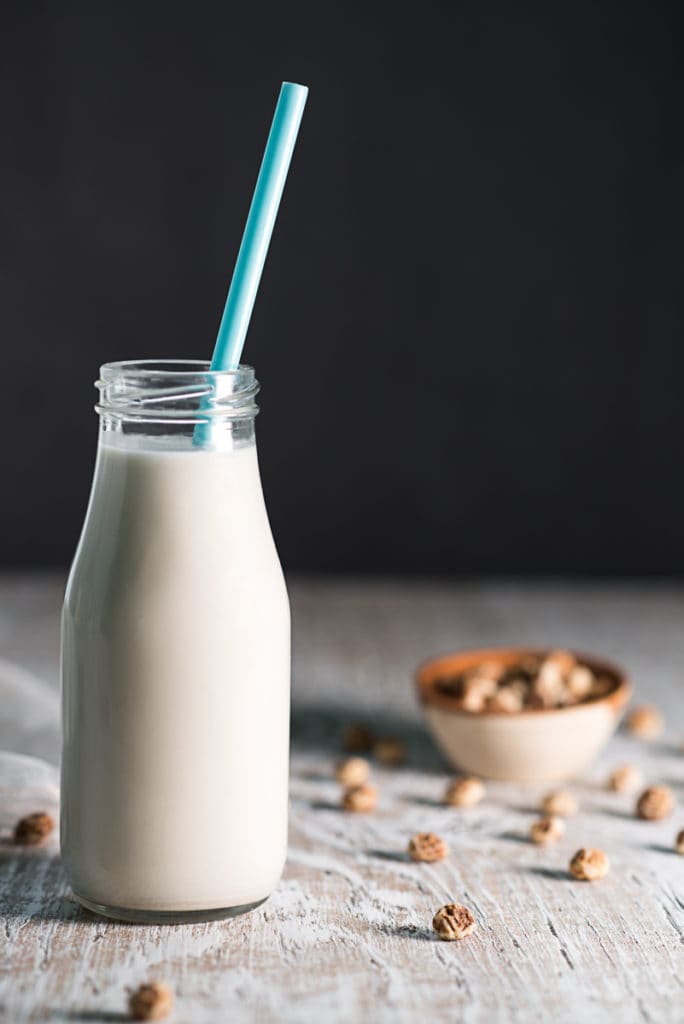
First off, if your mind is anything like mine, I know exactly what you're thinking. The tigernuts we're talking about here are plant tubers, and they do not belong to any part of a tiger's anatomy!
Alright, now that we've got that cleared up, let's talk about these wonderful little tubers and how to turn them into (in my opinion) the most delicious dairy-free milk.
What Are Tigernuts?
As mentioned above, tigernuts (also known as chufas) are mini tubers, not nuts! They come from a plant called yellow nutsedge (hence the name). Nutsedge is basically a type of grass (or to some, a pesky weed), and the little tubers are part of the root system (like beets and potatoes). This means they are not in any way related to tree nuts and are safe for those with tree nut allergies.
What Does Tigernut Milk Taste Like?
In my humble opinion, Tigernut Milk is the best tasting out of all the plant milks. It has a very mild nutty flavour with a subtle sweetness. This means it doesn’t require any added sweeteners or flavours (like many other plant milks need to make them more palatable).
I love adding Tigernut Milk to tea, dandelion coffee and lattes. It’s also great for smoothies, soups and dairy-free cream sauces.
Is Tigernut Milk Healthy?
Tigernut Milk is full of health benefits and, as mentioned above, it doesn't need additives to make it delicious and creamy.
Health Benefits
Superfood. Tigernuts may be small, but they sure are mighty! Full of many nutrients, including vitamin E, zinc, calcium, potassium and magnesium, these little tubers are considered to be a superfood.
Gut-loving. Tigernuts can be a life savour when it comes to digestive troubles. They are nut and grain-free, making them autoimmune paleo (AIP) friendly. They also contain three different digestive enzymes and are an excellent source of prebiotic fibre.
Beneficial to brain and nervous system function. Tigernuts are a rich source of glutamic acid. This amino acid acts as a neurotransmitter that's crucial for healthy brain development, cognitive function and nervous system regulation.
Heart healthy. Tigernuts are a good source of beneficial fats, including oleic acid. This specific type of fat has anti-inflammatory effects and can help to lower LDL (bad) cholesterol while increasing HDL (good) cholesterol.
Blood sugar balancing. Tigernuts have a low glycemic index. This means they don’t cause a sudden spike in blood sugar levels, making them a great option for those who need to keep their blood sugar balanced.
Seasonal Benefits
Spring and summer are great times to reap the digestive benefits of Tigernut Milk, adding it to smoothies, creamy iced drinks or light dairy-free cream sauces.
Autumn and winter are also excellent times to use Tigernut Milk to add a healthy touch to creamy soups, casseroles and pasta.
How to Make Tigernut Milk
Making Tigernut Milk at home is surprisingly simple. If you already make homemade almond milk or cashew cream, it's not much different. All you need is tigernuts and clean, filtered water.
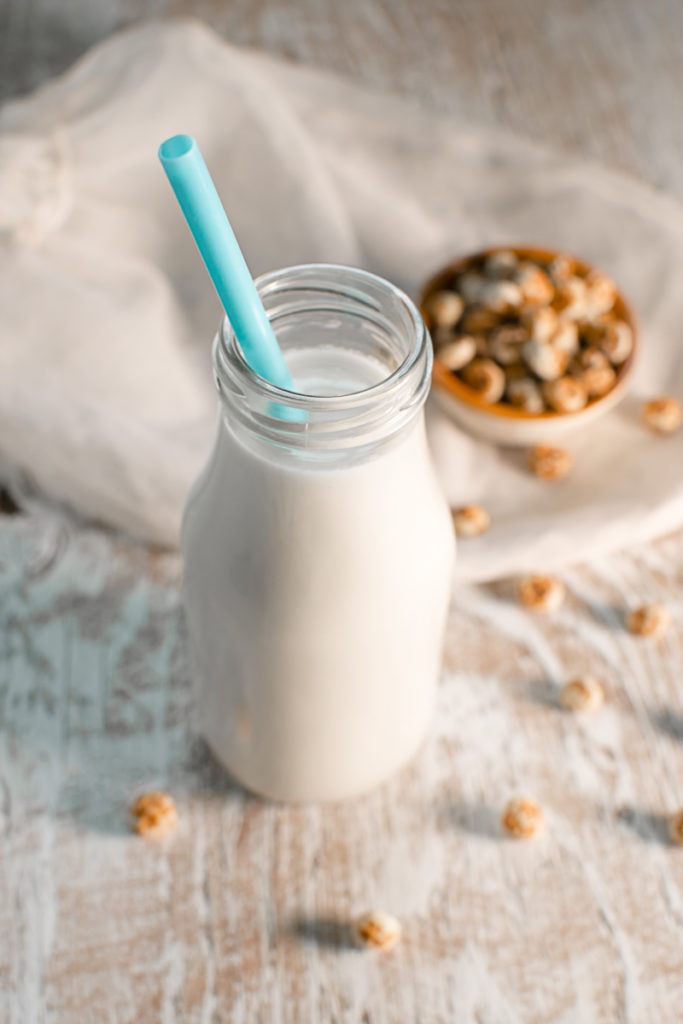
What You Will Need
Equipment
- Blender to blend the tigernuts into milk.
- Nut milk bag to strain the milk from the pulp.
- Container to soak the tigernuts.
Ingredients
- Tigernuts are all you need for both the creaminess and sweetness.
- Filtered water is the only other ingredient needed to create this homemade plant milk.
Step 1: Soak
Dried tigernuts are quite hard, so they do need to be soaked. I find it best to soak them for at least 12 hours. But if I have the time, I prefer to soak them for 24 - 48 hours as it creates a creamier, sweeter, more delicious milk.
To soak your tigernuts, place them in a sealable glass container and cover them with water, making sure they are fully submerged. Seal the container and refrigerate for 12 to 48 hours.
Step 2: Strain and Rinse (optional)
If you have only soaked your tigernuts for 12 hours, you can skip the straining and rinsing. Using the soaking water adds more creaminess and flavour. However, if you've left them for 24 - 48, I recommend straining and rinsing them since using the soaking water can cause the milk to spoil more quickly.
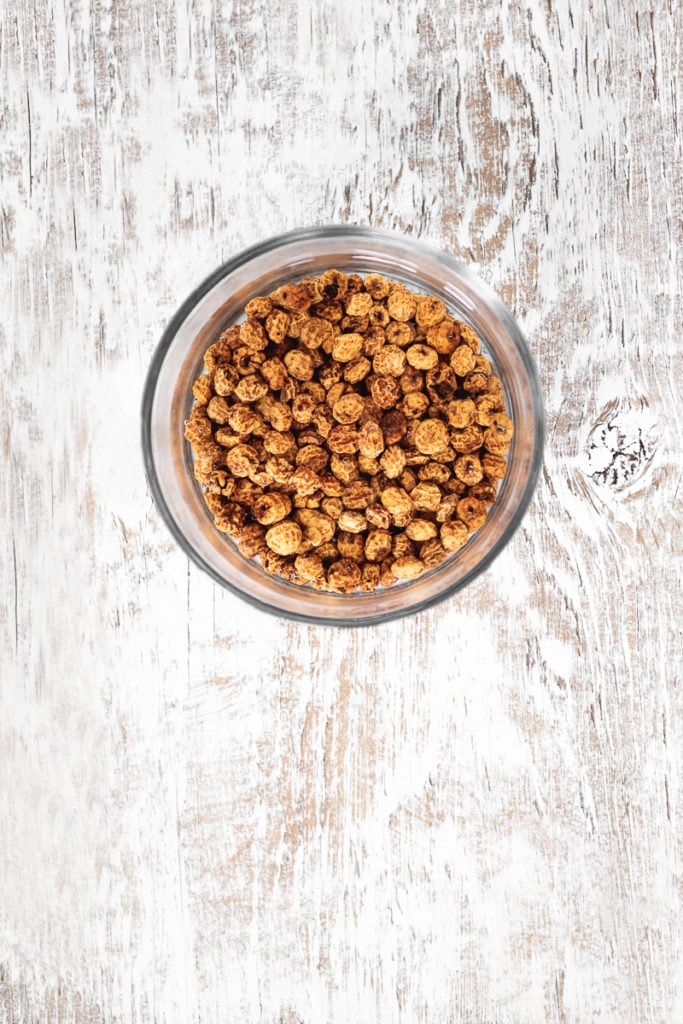
Step 3: Blend
Add the tigernuts and fresh water to your blender jug and blend until the tigernuts have broken down into a fine pulp. Depending on your blender, this can take 1 - 3 minutes.
Step 4: Strain
Next, drape a nut milk bag over a large measuring jug or medium-sized bowl. I like using a 4-cup measuring jug with a spout for easy pouring. It can be difficult to pour the milk into a jar or container from a bowl.
Pour the tigernut milk into the nut milk bag. Tightly hold the top closed with one hand (most bags also have a drawstring to close the opening) and squeeze the liquid through. Once most of the liquid is strained from the pulp, I like to shake it up and then give it a few more squeezes to get every last drop.
Make sure not to lift it too high as you're squeezing, as it tends to go in all directions. Turst me, I've made plenty of messes!


Once you have squeezed out all the liquid from the pulp, your Tigernut Milk is ready to use! If you won't be using it right away, pour it into an airtight jar and keep it in the fridge for up to 3 days.
You don't have to waste all that tigernut pulp, either! It contains lots of good fibre and makes great energy balls, edible dough and baked cookies!
My Top Tips
- Soak the tigernuts for at least 12 hours to ensure a smooth blend.
- Stir frequently if boiling Tigernut Milk on its own to prevent congealing or clumping.
Ways to Use Tigernut Milk
Recipe Highlights
Suitable for many diets. Tigernut milk is a delicious non-dairy milk substitute that's also nut and grain-free, making it friendly for whole 30 and AIP diets.
Naturally sweet. Tigernut milk has a natural sweetness and does not need any added sugar!
Gut-loving. Tigernuts are full of anti-inflammatory fats, enzymes and prebiotic fibre that contribute to healthy digestion and gut flora.
Superfood. Tigernuts are packed full of vitamins, minerals, healthy fats, antioxidants and amino acids.
More Dairy-Free Staples
FAQs
Tigernut Milk will typically last 3 - 4 days in the refrigerator. I find it is best consumed within 3 days. Make sure to keep it refrigerated and sealed in an airtight jar or container to avoid contamination.
Yes, Tigernut Milk can be boiled. It makes a delicious addition to hot cocoa, lattes, soups and sauces. However, when boiling on its own, make sure to stir frequently, as it can become congealed and clumpy at the bottom.
You can generally find dried tigernuts at your local health food store. You can also typically find them online at shops like Amazon.
Yes, Tigernut Milk can be an excellent addition to an expecting mother’s diet, especially if you are lactose or dairy-intolerant. Tigernut provides many essential nutrients that can contribute to healthy fetus development. Of course, consume within moderation and always consult with your trusted healthcare professional if you have any concerns.
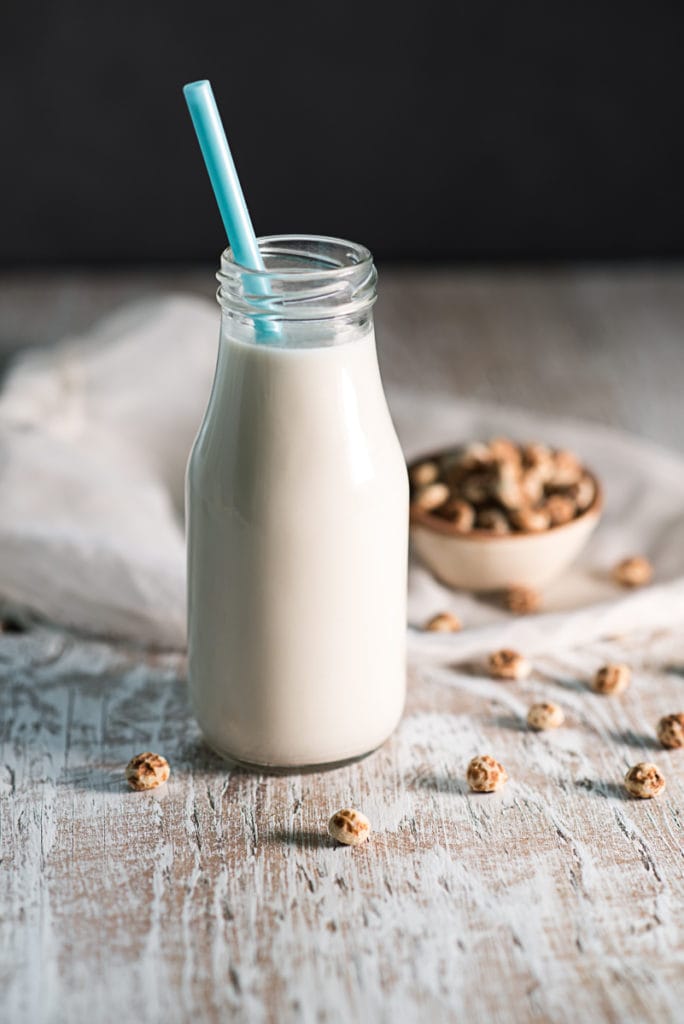
If you try this Homemade Tigernut Milk recipe, let me know how it turns out by leaving a comment and rating below! And make sure you're following along on Pinterest, Instagram and Facebook for more wildly nutritious recipes!
Homemade Tigernut Milk (Horchata De Chufa)
Print RecipeEquipment
- High Speed Blender
Ingredients
- 4 cups Filtered Water (plus extra for soaking)
- 1 cup Tigernuts
Instructions
- Dried tigernuts are quite hard, so they do need to be soaked. I find it best to soak them for at least 12 hours. But if I have the time, I prefer to soak them for 24 - 48 hours as it creates a creamier, sweeter, more delicious milk.To soak your tigernuts, place them in a sealable glass container and cover them with water, making sure they are fully submerged. Seal the container and refrigerate for 12 to 48 hours.
- If you have only soaked your tigernuts for 12 hours, you can skip the straining and rinsing. Using the soaking water adds more creaminess and flavour. However, if you've left them for 24 - 48, I recommend straining and rinsing them since using the soaking water can cause the milk to spoil more quickly.
- Add the tigernuts and fresh water to your blender jug and blend until the tigernuts have broken down into a fine pulp. Depending on your blender, this can take 1 - 3 minutes.
- Next, drape a nut milk bag over a large measuring jug or medium-sized bowl. I like using a 4-cup measuring jug with a spout for easy pouring. It can be difficult to pour the milk into a jar or container from a bowl.Pour the tigernut milk into the nut milk bag. Tightly hold the top closed with one hand (most bags also have a drawstring to close the opening) and squeeze the liquid through. Once most of the liquid is strained from the pulp, I like to shake it up and then give it a few more squeezes to get every last drop.Make sure not to lift it too high as you're squeezing, as it tends to go in all directions. Trust me, I've made plenty of messes!Once you have squeezed out all the liquid from the pulp, your Tigernut Milk is ready to use! If you won't be using it all right away, pour it into an airtight jar and keep it in the fridge for up to 3 days.
Notes
*Shake well before using as all the nutritious fibre settles to the bottom!




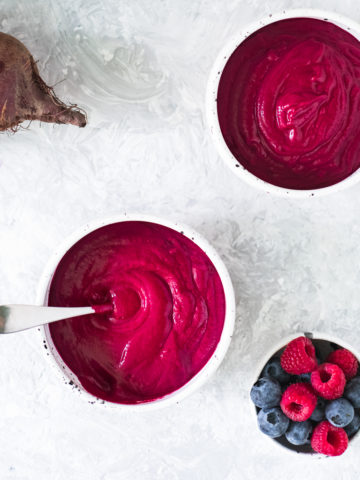
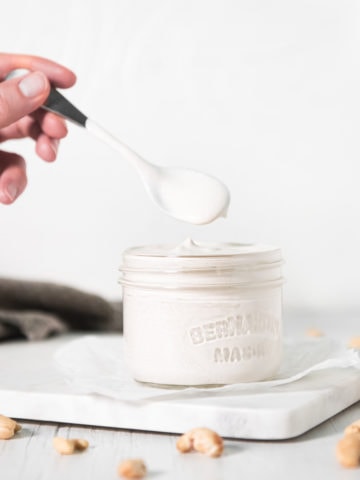
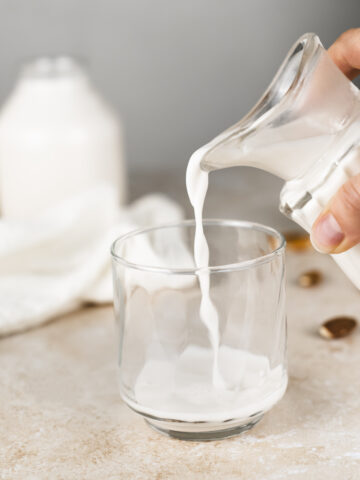
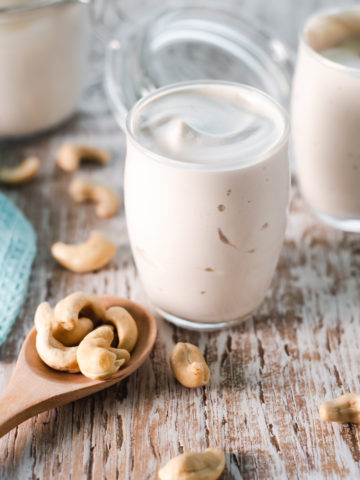
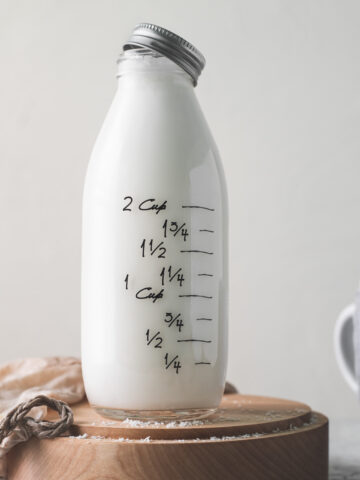
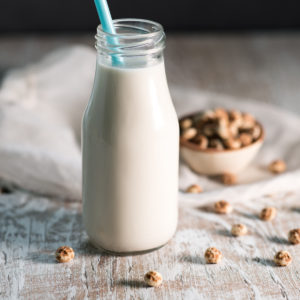
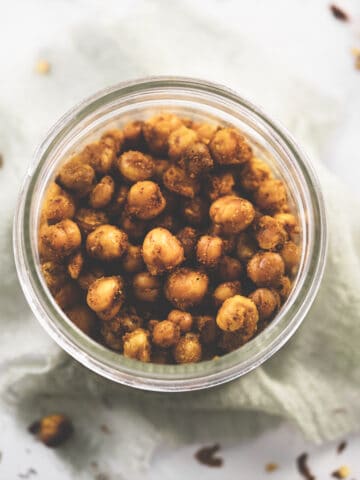
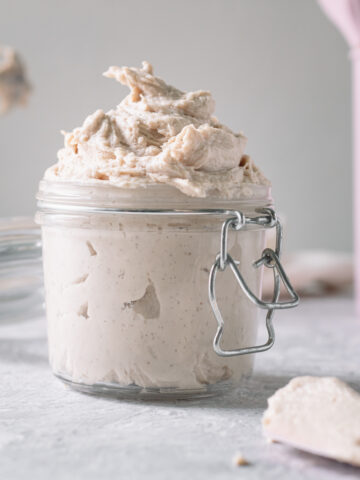
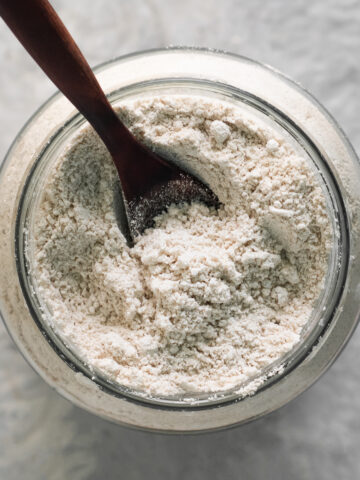
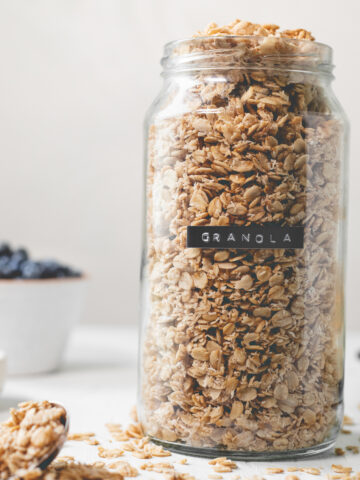
Rate this Recipe & Share How it Turned Out!